1. Get Misted By A Giant Waterfall
Intense weather patterns combined with glacial runoff create an extremely powerful collection of water that flushes over the land to the sea. The massive intensity of these waterfalls, some of the largest in Europe, send an enormous amount of mist over the surrounding lands that sometimes create concentrated ecosystems within the local vicinity. There are several that you can stand so close to that you will become drenched in their spray and can almost feel the ground shake:
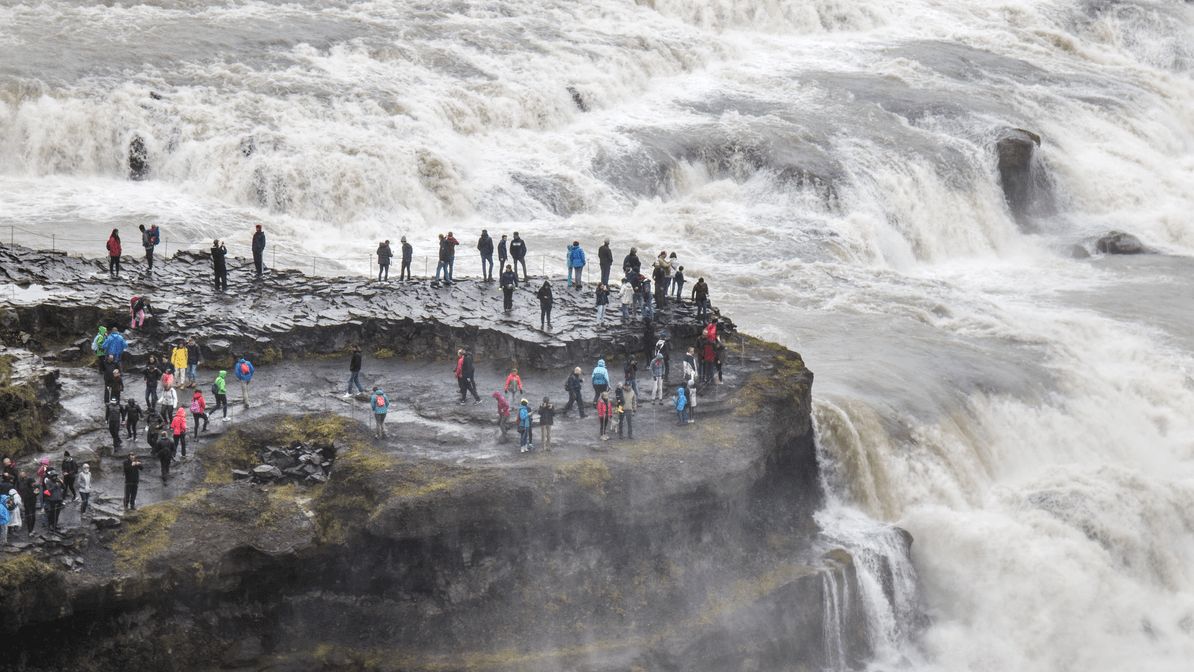
- Gullfoss: This massive two-tier waterfall in the Golden Circle thunders down the Hvitá River and drops 32 meters (105 feet) into the Olfusa Canyon. There is a large rock outcropping near the top of the falls where you can be bombarded with a wall of mist.
- Dynjandi: This waterfall in the Westfjords is composed of a cascading set of drops that total to over 100 meters (328 feet) in height. A path leads from the base of the falls up a grand staircase of basalt to the massive upper section where you can stand at the foot of this grand staircase of power.
- Skogafoss: With a width of 15 meters (49 feet) and a drop of 60 meters (200 feet), this is one of the biggest waterfalls in the country. It is near the southern coast of the country, and you can walk along the rocky stream bed and get blasted by the mist.
- Seljalandsfoss: This 60-meter (197-foot) waterfall sources from the volcano glacier Eyjafjallajökullin. A walking path circles behind the falls, so you have the opportunity to explore the thunderous water from all angles.
- Dettifoss: Nicknamed “tumble falls,” this is the largest waterfall in Iceland by water volume. It spans over 100 meters (328 feet) wide and drops 45 meters (148 feet) into a wide canyon called Jökulsárglúfur. The walkway along the canyon edge is continually bombarded by the mist.
2. Walk Between Two Continents
The island of Iceland spans over the North American and Eurasian tectonic plates. This line of separation is called the Mid-Atlantic Ridge and runs north to south in the western part of the country. In some sections you can walk right between these massive basalt walls that form a line of separation emerging from the depths of the earth:
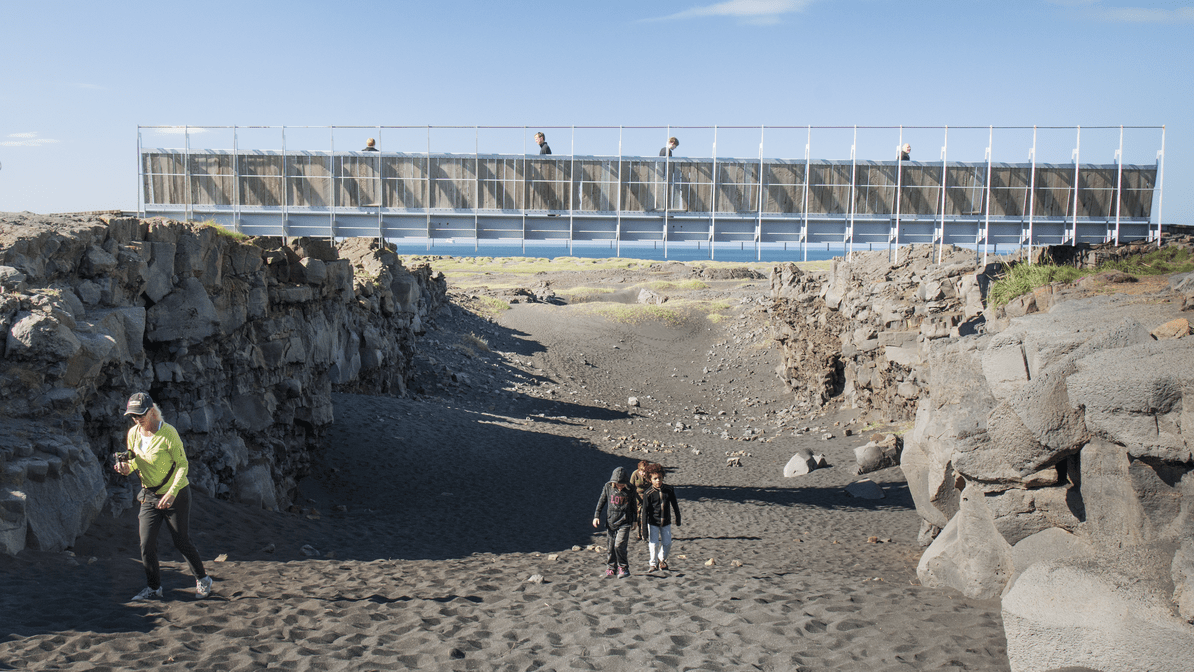
- Almannagjá: As one of the primary attractions of Þingvellir National Park, this landmark represents a clear separation line of two major continents. A walkway is constructed down the center to facilitate the thousands of people who visit here on a daily basis.
- Bridge Between Continents: Another opportunity to explore the dividing line between two continents. It's located on the Reykjanes Peninsula and much less populated than the attraction to the north.
3. Take A Dip In A Hot Spring
The natural geothermal activity of Iceland creates a multitude of hot springs throughout the country. While their temperature and compositions change throughout the centuries, there are always a number of opportunities to submerge and relax:
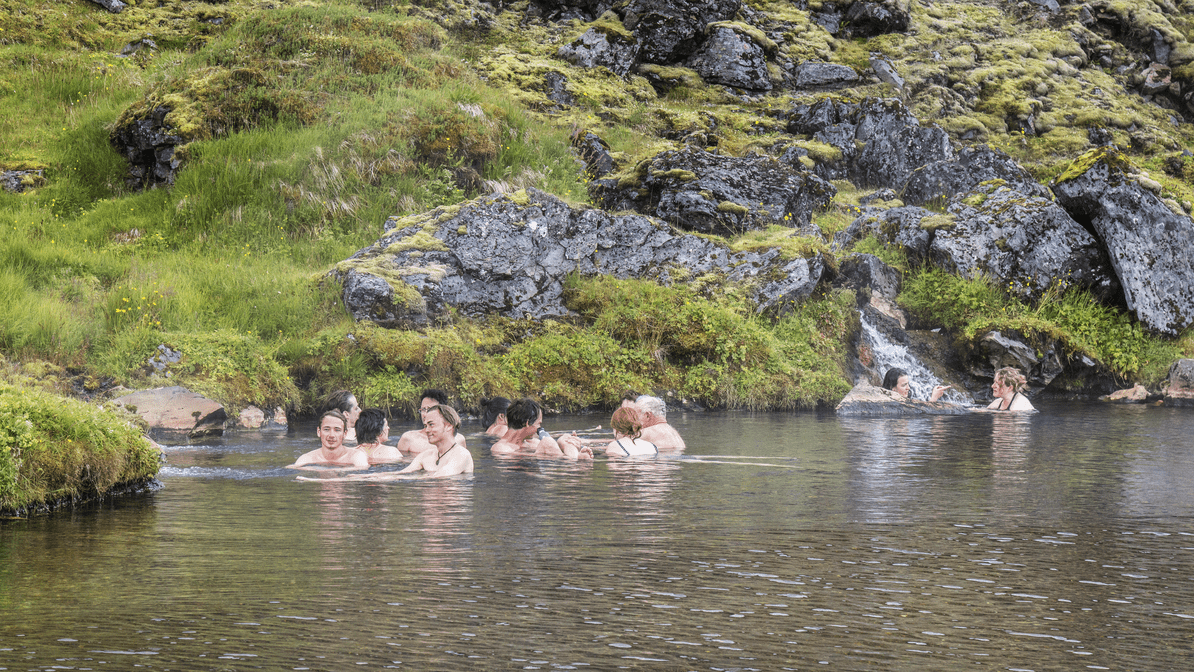
- Seljavallalaug Zwembad: This hot spring is built-up into a collection pools set on the side of a mountainous valley in the southern region of Iceland. The 1-kilometer walk to the pool from the car lot is completely worth the short trek as you settle into the naturally heated water amid the beautiful scenery. The water is dark green and deep at one end and shallow on the other.
- Brennisteinsalda Bathing Place: This natural hot spring is located right on the edge of a 500-year-old hardened lava field called Laugarhaun and at the center of the Torfajökull caldera, a huge circular crater that stretches over 15 kilometers in diameter. Located in the heart of the Fjallabak Nature Reserve, it’s one of the more secluded and untouched hot springs in Iceland. The name "Brennisteinsalda" means "Sulphur Wave" and echoes the natural fragrance of the region.
4. Tour The Capitol City
Reyjavík is Iceland’s bustling capital with a population of 125,000 people. While it is known as one of the best party cities in the world, there are also plenty of wonderful sights, experiences, and museums that everyone can enjoy exploring. A quick read of 48 hours in Rekjavík will help you with a more complete itinerary, but here is a quick introduction to some of the adventure opportunities:
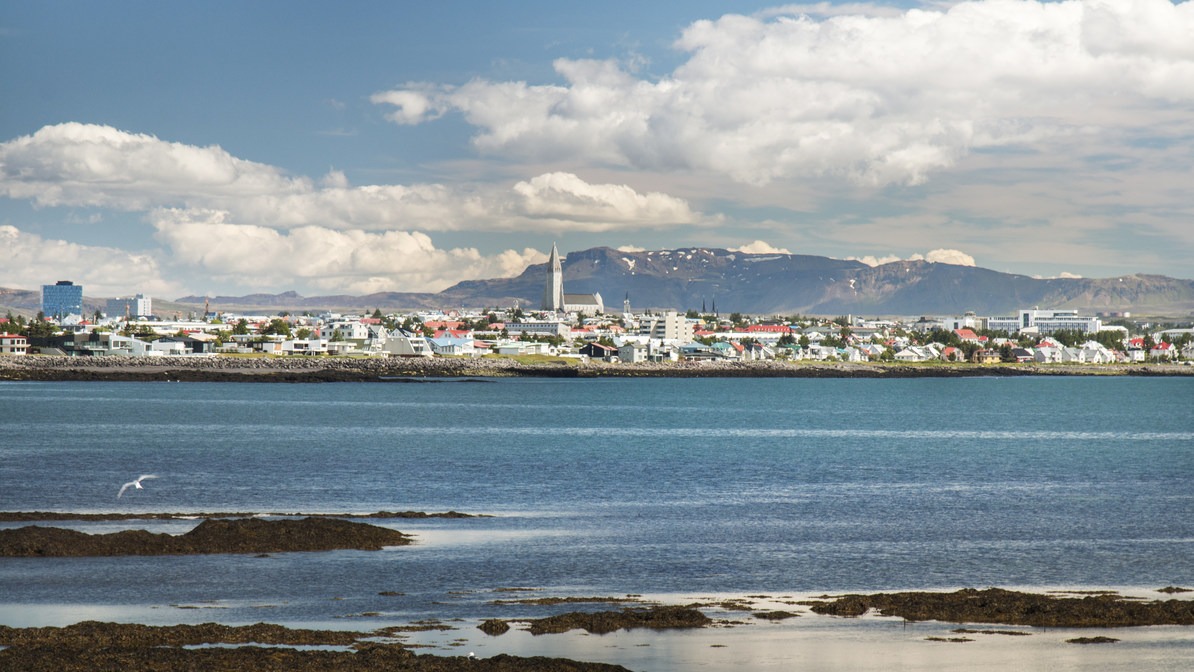
- Hallgrímskirkja: Standing 74.5 meters (244 feet) on a hill overlooking the city is the Evangelical-Lutheran church of Iceland. It’s the largest church in the country and one of the most visited destinations. The stepped concrete facade reflects the volcanic basalt columns and high fjords present throughout the Icelandic landscape, and it is the perfect introduction to this national symbol and architectural style.
- Nauthólsvík Geothermal Beach: This local swimming and bathing paradise is located right on the Atlanctic coast. Water that is heated by the natural volcanic activity of the land is fed into the bay, making it an extremely popular spot to enjoy all year long. There is also a hot tub on shore!
- Ægissíða Biking and Walking Path: A wonderful coastline biking and walking path extends around Reykjavík and around the city limits out over the Seltjarnarnes Peninsula to the west. You can travel on this coastal route for over 20 kilometers (12 miles) past a number of unique structures and features, including Sólfarið, the Harpa Concert Hall, the Grótta Island Lighthouse, and the Seltjarnes golf course, as you return home to the city.
5. Explore an Ice Cave
Warm flowing water from seasonal glacial melt forms miles of underground tunnels and caves beneath thick and hardened winter ice. These inner walls can range from opaque white colors to clear crystal blues. It's an unbelievable experience to know that you are potentially exploring realms that have been frozen in time for thousands of years:
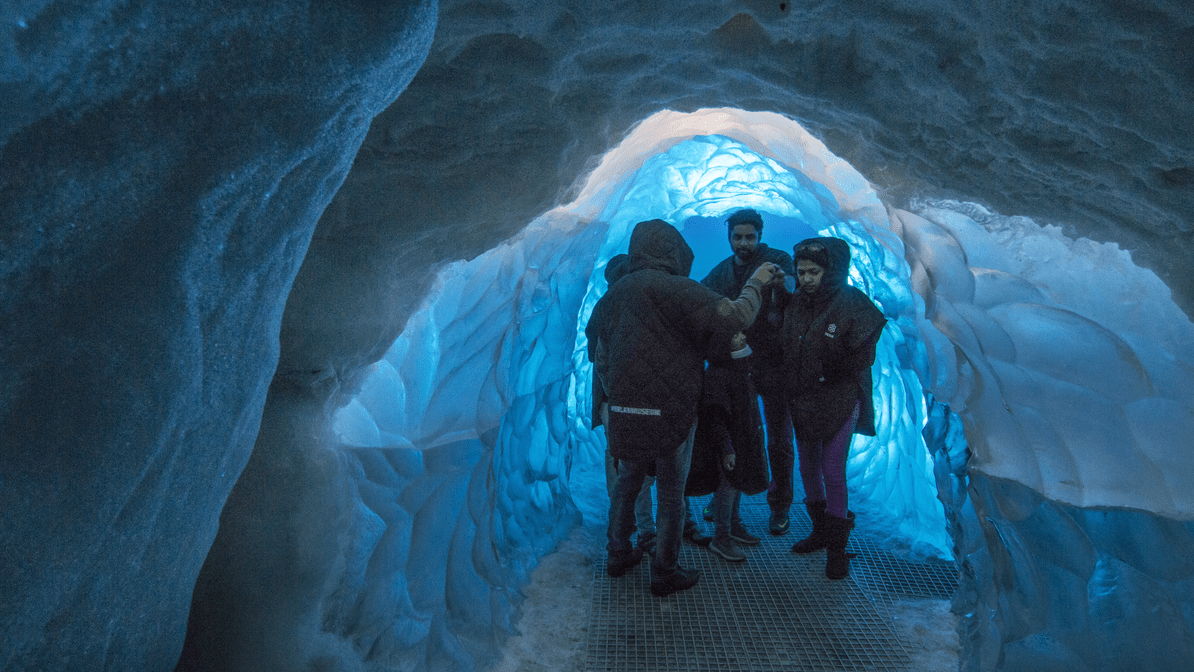
- Perlan: If you need some time to warm up to the idea of standing below hundreds of feet of ice, this man-made experience in the center of Reykjavík may be a good place to start. Inside this iconic glass-domed city structure sits the newly installed Wonders of Iceland Exhibition with an incredible Glaciers and Ice Cave experience. There is also a Vatnajökull Glacier educational area.
- Langjökull: This is an intermediary step to the completely natural formations. Here, you can step in to the Ice Age inside a man-made ice cave that tunnels into Europe's second largest glacier. A guided tour starts off with monster trucks bringing you to the entrance of the ice cave 1,200-meters above sea level.
- Breiðamerkurjökull: This is the largest ice cave in Vatnajökull National Park at the moment, and it was discovered in 2005. Commonly known as the "Crystal Cave" among tourists, the inside becomes a brilliant blue color as the lights reflect and refract though the multi-faceted layers of this natural formation. Because these ice caves are always melting and forming, next year it may be located somewhere else!
6. Smell the Geothermal Activity
Along with the soothing springs and beautiful volcanoes comes the fresh aroma of sulfurous odors emanating from the depths of the earth. While you may get used to this hint of fragrance that typically accompanies the drinking water, there are many places throughout the country where you can be bombarded by bursting clouds of thick hydrogen sulfide. This may not sound appetizing, but if you clip your nose, you’ll find that these regions behold an impressive amount of visual beauty. The concentrations of gas are only likely to displease your nose, but if you begin to feel eye and throat irritation, just keep moving along to an area away from the steam:

- Geysir and Strokkur: The Golden Circle is a primary demonstration of Iceland’s natural geothermal energy, and it holds the likes of several geysers and bubbling mud pits. Spectators have been visiting this location since the 18th century, and Strokkur continually blows about every five to 10 minutes, spraying boiling water over 20 meters (65 feet) into the sky.
- Námafjall Geothermal Field: This is one of the largest geothermal areas in the country, and the most easily accessible. Upon your arrival, you’ll immediately be greeted by the incredibly strong smell of hydrogen sulfide and the hissing of natural gas vents. There is a circular path that allows you to safely explore the vibrant landscape.
- Brennisteinsalda & Bláhnúkur: These are two mountains located in the highlands of the country in the Fjallbak Nature Reserve. Regular fumaroles and thick sulfur steam emerges from the ground all around this vibrant landscape. There is a short loop that leads to the top with 360-degree views of the surrounding area, and the mountain is also split by a gorge that you can access and explore.
7. Climb a Glacier
Glacier climbing is undoubtedly one of the more adventurous sports in Iceland. There are many Mountain Guides throughout the country that offer year-round tours of these enormous remnants of the ice ages. Keep in mind that weather conditions can change very rapidly at high elevations, and nature requires you to have a very high level of fitness to embark on this type of trek. Do not attempt a solo expedition. There are plenty of available excursions with experienced professionals:

- Skaftafellsjökull: Vatnajökull National Park is the largest national park in Iceland and offers an incredible climax to your week-long adventure. Its variety of landscape features created by the combined forces of rivers, glacial ice, and volcanic activity are a marvel. Guided glacier walks are available up Skaftafellsjökull.
- Snæfellsjökull: This glacier-capped volcano was made famous by Jules Verne's novel "Journey to the Center of the Earth." While you shouldn't plan on this location to be the start of a journey to the depths of the planet, you can certainly enjoy a thrilling experience up an incredible mountain that appears enormous even from Reykjavík.
8. Take A Day Hike
There are far more hiking opportunities throughout Iceland than you could ever count! From short, well-manicured pathways, to rugged and rocky climbs, there are amazing opportunities literally around every corner. Whether you’re headed up a steep and barren mountain, along a lush coastal environment, or between a serene fjord valley, there is always an incredible trail within the vicinity begging for your exploration:
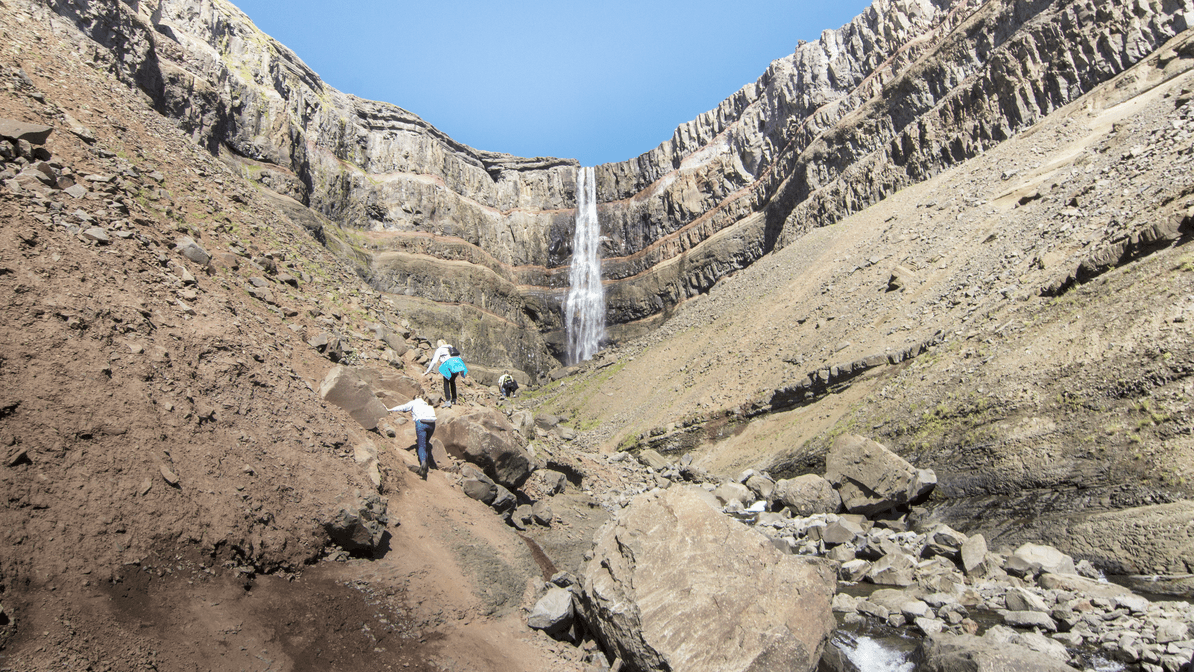
- Litlanesfoss and Hengifoss: Located in the eastern region of Iceland just outside of Egilsstaðir, these waterfalls flow over a unique and incredible array of geological formations formed during the origins of the island. A there-and-back trek begins near a bridge across the Lagarfljót River and climbs approximately 250 meters (820 feet) over 3 kilometers (1.86 miles) along the Hengifossá River to one of the highest waterfalls in Iceland. Following an eruption, lava hardens and cools, creating hexagonal columns perpendicular to the surface. Hengifoss is surrounded by a series of red-orange layers of clay that are separated by hardened basalt from various volcanic eruptions. These horizontal lines are so striking that they can be seen all the way from the parking area.
- Neðri-Stafur and Seyðisfjörður: This small town on the east coast of Iceland is well known for its old wooden buildings and remnants of urban street configurations. An incredible hiking path begins in the Neðri-Stafur cliffs a follows the water down a series of cascading waterfalls surrounded by high cliffs. Even more magnificent are the dozens of additional waterfalls pouring down the steep valley walls far above you on either side of the valley. While you may get your feet wet, this is certainly one of the most serene and calming hiking paths in the county. Many trekkers choose to start at the top of the valley off of the Stafirnir Road at approximately 350 meters (1,150 feet) and make a one-way descent all the way to the Blue Church at the mouth of the fjord.
- Rauðfeldsgjá Gorge: This natural fissure on the Snæfellsnes Peninsula extends inside Mount Botnsfjall and is overwhelmed with a glacial melt stream. From the parking area, a marked trail climbs 125 meters (410 feet) over 0.5 kilometers (0.3 miles) up a valley to a minor waterfall and a narrow passage that leads inside the mountain. Inside, the space widens into a majestic grotto covered from the ground to the sky in a bright green moss. Overhead the canyon lets in a window of light, giving the walls and floor a mysterious glisten.
- Súlur: This double-peaked 1,213-meter (3,753-foot) mountain towers over the suburbs of Akureyri. Most of the mountains here were formed by layers of lava 5 to 10 million years ago. The surrounding landscape is covered with thick moss and leads across beautiful stream beds. A hike up Súlur offers a rewarding 800-meter (2,625-foot), 11-kilometer (7-mile) there-and-back climb with incredible views over the city and out to Eyjafjörður, the longest fjord in Iceland. The rocky tops of these mountains are covered by snow throughout the year, and trekkers should be aware that the weather conditions can change suddenly to storms and blizzards.
9. Bask In A Natural Spa
While the raw and untouched hot springs may not fit your type of bathing, there are plenty of more official spa experiences throughout the land that feed off of the same natural energy. From heated pools, to bubbling tubs, to steaming bath rooms, each destination has its own diversity of relaxation opportunities for you to submerge in:
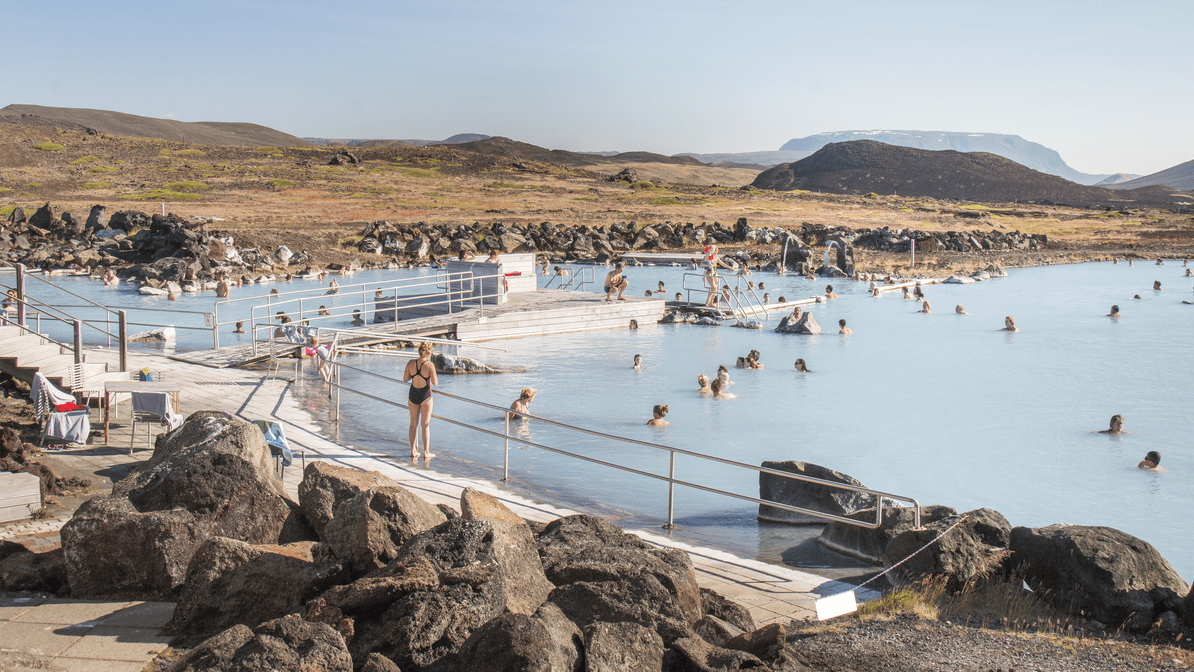
- Blue Lagoon: Set atop an 800-year-old lava field in a UNESCO Geopark, the Blue Lagoon (Bláa lónið) is Iceland’s most luxurious geothermal spa. Come here to enjoy milky-blue waters that are rich in blue-green algae, mineral salts, and fine silica mud, ingredients that form a natural blend that softens skin and soothes the body in an unforgettable and enchanting experience.
- Laugarvatn Fontana: There is a long tradition of the community using these mineral-rich waters for religious practice as well as restoration of the body and soul. In addition to the spa treatment there are steam room cabins, a Finnish-style sauna, and three mineral baths that vary in depth and size. If at any point you’re looking for a quick cool down, walk out onto the dock into Lake Laugarvatn, where you can take a dip in this refreshing Icelandic lake.
- Mývatn Nature Bath: This beautiful alkaline lagoon is heated by the natural geothermal activity of the region and surrounded by a colorful landscape. The water is cloudy due to various minerals that are believed to have healing properties, and it is built up with a sand and gravel bottom. There are two steam baths, a natural sauna, and an enclosed restaurant. Staying a week in the winter will almost guarantee you an opportunity to experience the Northern Lights!
10. Spend The Night At A Campground
There’s nothing like waking up with nature all around you. All throughout Iceland there are campgrounds to overnight in along your travels. Some serve as quick pit stops on the journey, but others are nestled within truly magnificent landscapes that you can appreciate for many days at a time. Summer, with its seemingly endless amount of sunlight, is a special time to enjoy these remote places where the adventure doesn’t necessarily end with the day:
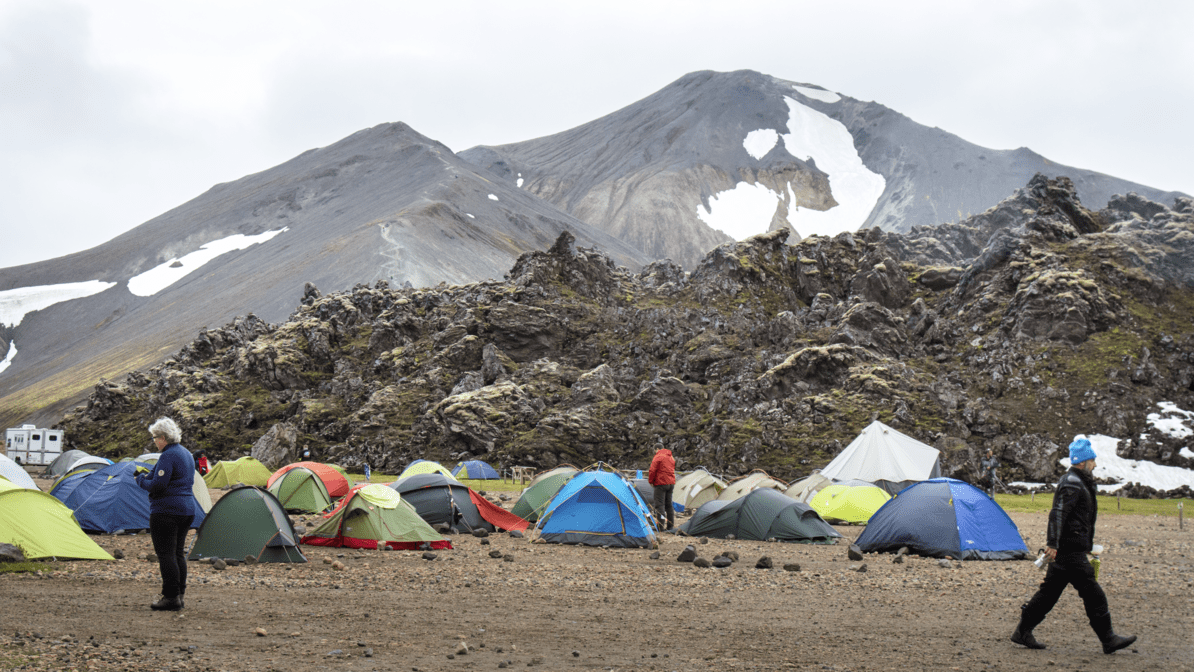
- Hamrar: With 14 individual camping fields and approximately 6 hectares (14 acres) of land, thousands of campers visit this large campsite outside of Akureyri throughout the year, including individuals and families, schools, and corporations. There is disc golf, giant foosball, minigolf, and ice skating. Each of the camping fields is named after tree species that grow locally such as larch (Larix), poplar (Populus), birch (Betula), and willow (Salix)
- Djúpivogur Campsite: German merchants began trading in the small town of Djúpivogur in 1589, and today a campsite is nestled between high rock formations above the harbor. There is a striking view over docked boats to the fjord named Berufjörður. There are also unique wooden Lodging Barrels, owned by the Hotel Framtíð, which offer pet-friendly accommodation. During the summer, day trips are offered to the Island of Papey, where you can find the smallest and oldest church in the country as well as a wild puffin sanctuary!
- Reykjavík Eco Campsite: This five-star eco-friendly campsite is located right in the middle of Iceland’s capitol and largest city. It’s an extremely popular overnight choice for tourists and can accommodate 900 people in tents, cabins, cars or caravans.
- Landmannalaugar: This campsite is at the heart of the Fjallbak Nature Reserve, an area home to volcanoes, hot spots, lakes, rivers, and a variety of vegetation. The campsite itself is at the edge of a hardened lava field called Laugahraun, and it dates back to an eruption that took place over 500 years ago. The reserve is open between late June and early September, and many people visit here on a daily basis.
- Þórsmörk: Named after Thor, the hammer-wielding thunder god of Norse mythology, this area has a frequent history of trembling ground amid the surrounding volcanoes. This campsite has a large grassy field with some narrow worn paths, and it is surrounded by an incredible diversity of hiking opportunities. The area overlooks Krossá, a wide river, and large floral mountains beneath Eyjafjallajökull.
11. Learn About the Rich Culture
Iceland has a rich recorded history that dates back to over 1000 years ago. Most of the first settlements were fishing communities nestled within the deep fjords around the edges of the island. Other groups ventured farther inland attracted by the warm waters and large freshwater lakes. There are many places to learn about the Icelandic founding values, beliefs, and practices throughout the country:
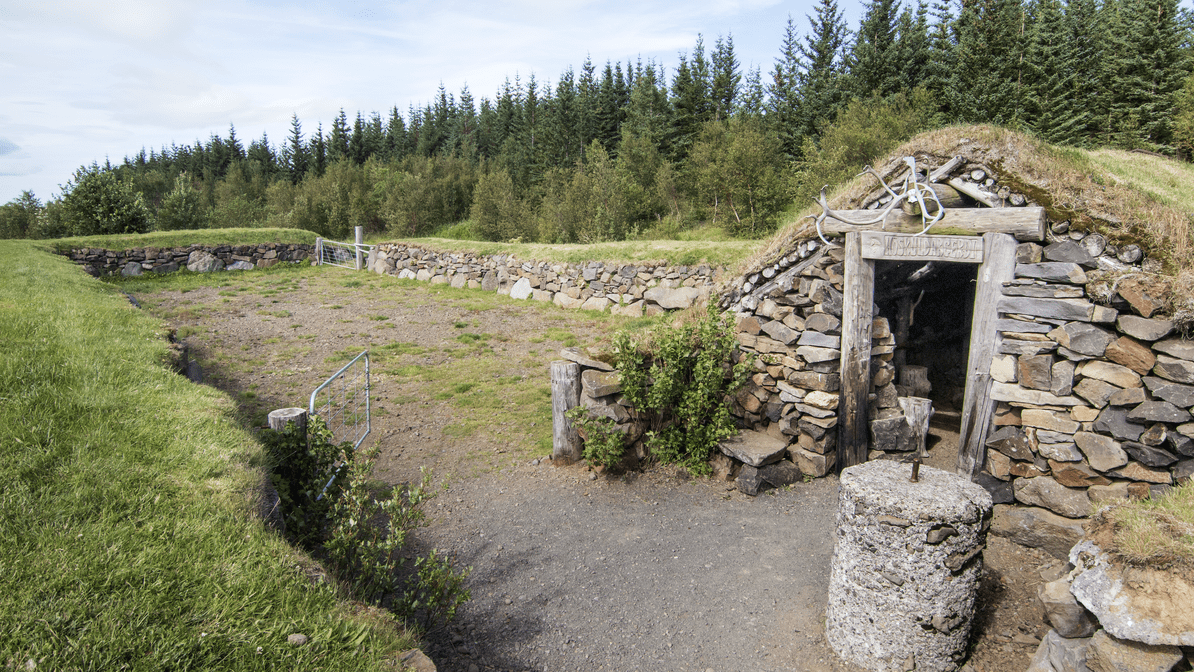
- Reykholt: This settlement in the western region of Iceland is one of the country’s most renowned historical sites. It was once the home of the writer, scholar and chieftain Snorri Sturluson, who lived here during the 13th century. There is an incredible amount of unique elements to explore and learn about including Reykholtskirkja (Church of Reykholt), Royal Grove, Snorri’s Garden, the Old District School, Snorrastofa, Site of the Ancient Abode, a medieval church, the 19th-century church, Skrifla Hot Spring, Höskuldur’s Pen, Snorri’s Pool, and the Húsafell Stones. Archeologists are still working here and finding medieval remains.
- Þingvellir: Serving as one the most historical, cultural, and geologically significant places in Iceland, this national park is a stop that can’t be missed. The Althing is the national parliament of Iceland and was established here over 1,000 years ago. The Lögberg, or Law Rock, was a natural platform for holding speeches, where the Lawspeaker presided over the assembly. Sessions were held at this location until 1798.
12. Tour Some Icebergs
Along with the largest glaciers in Europe comes a series of impressive proglacial lagoons that constantly change with the seasonal freezing and thawing. Starting high on the tops of dormant volcanoes, these flowing ice sheets carve their way through valleys down to the sea demolishing and eroding everything in their path. At the bottom, a glacial lagoon is formed as the fresh water melt collects and pools. Unfortunately, climate change contributes to the diminishing size of the glaciers, but as a result, the pools become larger and stretch farther inland:
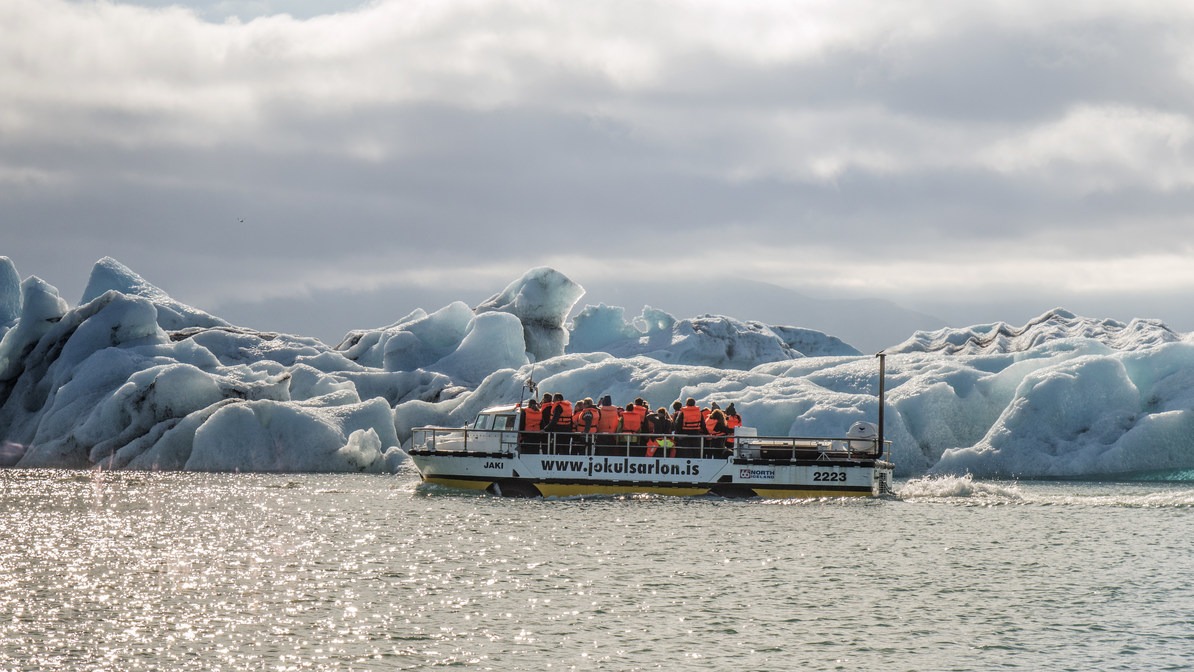
- Jökulsárlón: Iceland’s most famous glacial river lagoon is at the base of Breiðamerkurjökull in the southeast of Iceland. As the glacier recedes, the pool becomes larger and larger. There are great icebergs that break off from the shore and freeze and thaw throughout the seasons. This location is delightful at all times of the year, and you can even hop on a boat tour! It's a must-see stop along Iceland's Ring Road.
13. Explore A Volcanic Crater
You never know when an Icelandic volcano is going to awaken from the depths of the Earth. Geological samples display a fascinating, but violent history of explosions, magma bursts, and lava outflows that have smoothed over the land and left hardened polygonal basalt structures prevalent throughout the countryside. There are designated trails that circle the rims of many of these volcanic craters. Some are only a few meters high while others stretch over 100-meters into the sky. These are often relatively quick adventures that only take about an hour or two to experience:
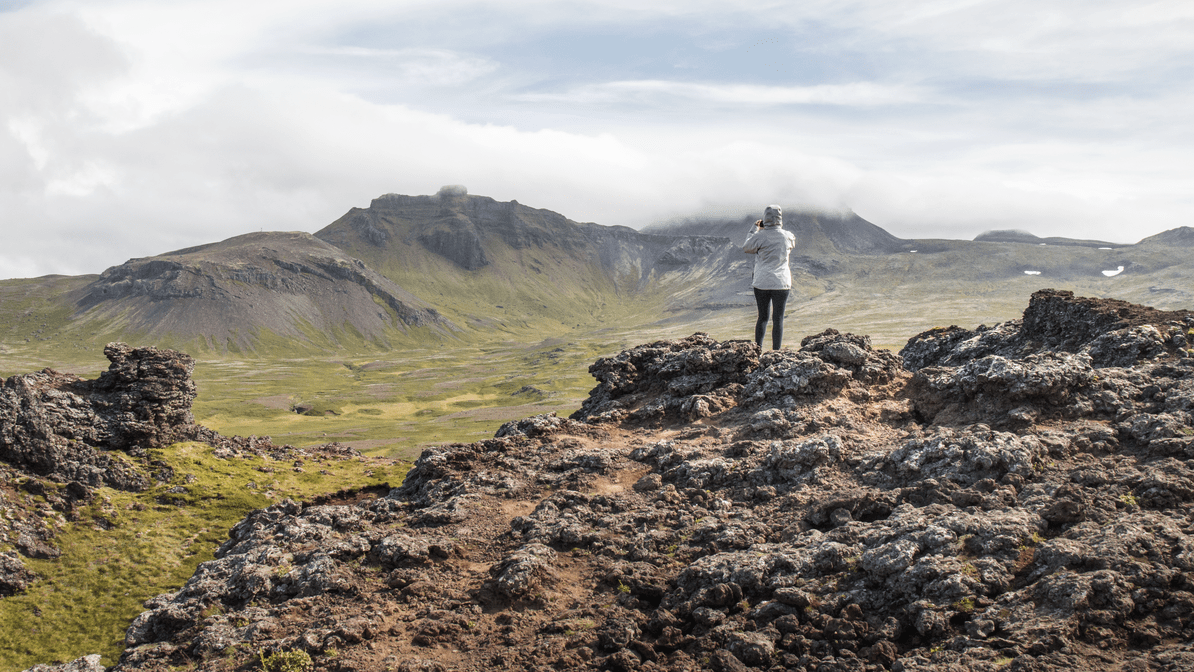
- Grábrókargígar: This national monument is another former hot zone comprised of three volcanic craters called Stóra (big) Grábrók, Litla (small) Grábrók, and Grábrókarfell. It is estimated to be over 3,600 years old, and it rises over 100 meters (328 feet) above the landscape. A constructed pathway allows you to get up close to this interesting geology and view the surrounding land from the edge of the former Grábrók Volcano.
- Saxhóll: Between 3,000 and 4,000 years ago, this striking volcanic crater protruding from the landscape was formed in an uproar that spewed magma across the surrounding lands. It’s located near the southern tip of the Snæfells Peninsula in Snæfellsjökull National Park and rises 109 meters (358 feet) above sea level. A walking path with steps to the summit was constructed to help preserve this precious natural formation. From the top there is excellent visibility of the Snæfellsjökull Glacier to the east and the tip of the peninsula in the North Atlantic to the west.
- Viti: This crater is roughly 300 meters in diameter, and began forming sometime in 1724. There is a beautiful trail that circles the rim that is great for beginners and can be completed in about a hour.
- Hverfjall: A 3-kilometer hike around the top of this crater takes about an hour. The last eruption of this popular tephra cone took place roughly 4,500 years ago, leaving a rim that is about 1-kilometer wide. This popular hiking area is nearby Lake Mývatn and a plethora of outdoor adventure opportunities.
14. Embark On A Multi-Day Trek
You will undoubtedly expose yourself to a series of short hikes along your travels, but a special adoration can be found upgrading to a multi-day backpacking adventure. There are amazing opportunities all throughout the country, and some trails that people flock to from all over the world. Even though you will likely be in the vicinity of other trekkers, this feeling is somewhat comforting knowing that you are many kilometers away from the nearest towns and settlements. Undoubtedly, these treks require a high level of physical and mental preparation, but adventures like these bring you to new levels of exploration that can best be described as magnificent life-changing experiences:

- Laugavegur: This trek is one of the most beautiful and awe-inspiring adventures in all of Iceland. It is so renowned that it has been rated by National Geographic as one of the best hikes in the world. This adventure is a 54-kilometer (34-mile) one-way route that begins in the hardened lava fields of Landmannalaugar and ends in the glacial valley of Þórsmörk. It is typically completed over two to four days with potential overnights in Hrafntinnusker, Álftavatn, Hvanngil, and Emstrur. Throughout the trek you will experience a grand spectrum of landscapes that include red rhyolite mountains, vibrant turquoise sands, bubbling thermal vents, neon green mosses, glistening white glaciers, hardened volcanic spew, cold river flows, and eroded gravel floodplains.
- Fimmvörðuháls: Often considered as a trail extension of the Laugavegur, this trek begins in Þórsmörk and connects to Skógar. It is 29 kilometers (18 miles) and traverses a pass between two glaciers: Eyjafjallajökull and Mýrdalsjökull. At Skógar there is a magnificent waterfall called Skógafoss that’s located along Route N1, the Ring Road, that is very popular among all tourists. It's an Icelandic tradition to hike Fimmvörðuháls Pass on the summer solstice, but be warned that this is an extremely popular activity.
- Jökulsárgljúfur: This two-day trek from Asbyrgi to Dettifoss is in northern Iceland and traverses the massive canyon called Jökulsárgljúfur. Geologists have determined that glacial melt carved out the land around 10,000 years ago, and again 3,000 years ago. Meanwhile, the local folklore declares Ásbyrgi was stamped into existence by the chief god Odin’s eight-legged horse, which created the valley’s signature horseshoe curve. The trail is approximately 32 kilometes (20 miles), which will bring you along massive gorges, elegant springs, vibrant forests and serene plains.

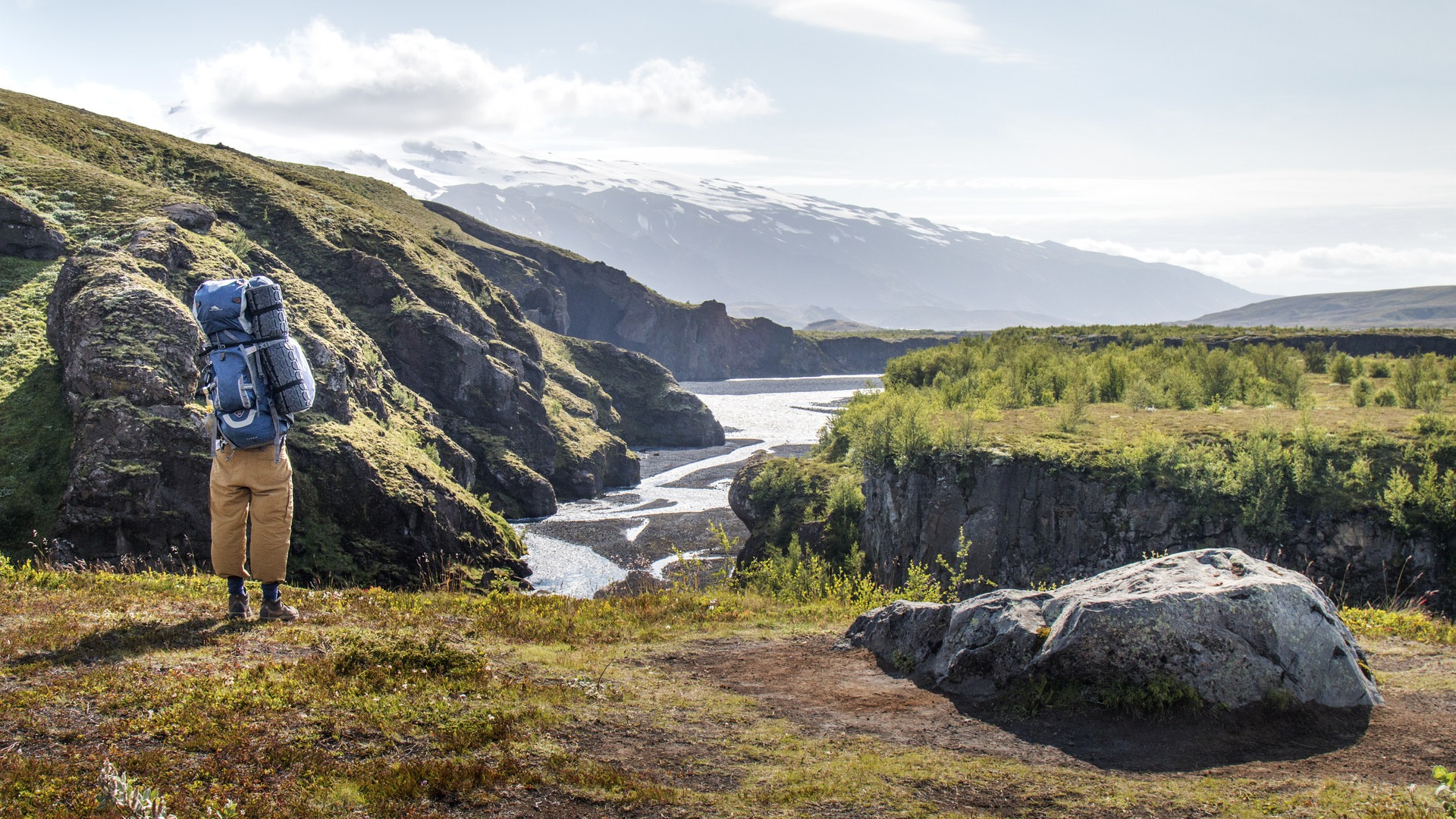
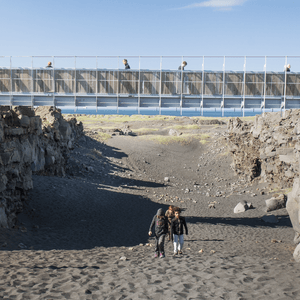
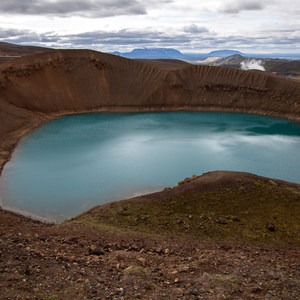
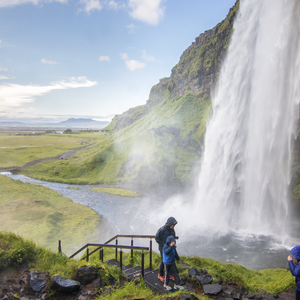
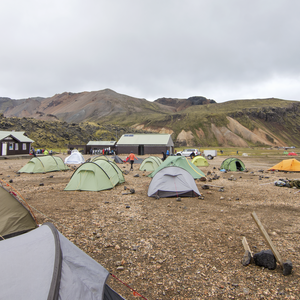
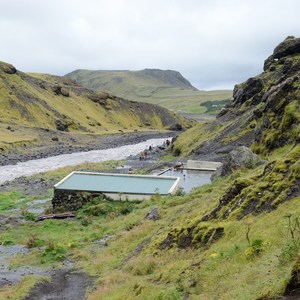
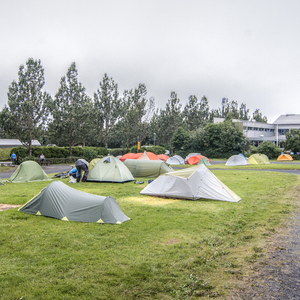
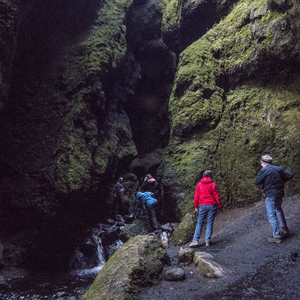
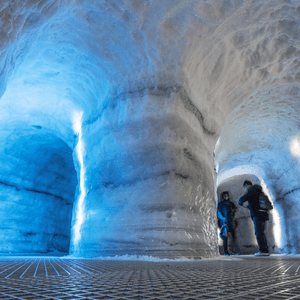



Comments
Sign In and share them.